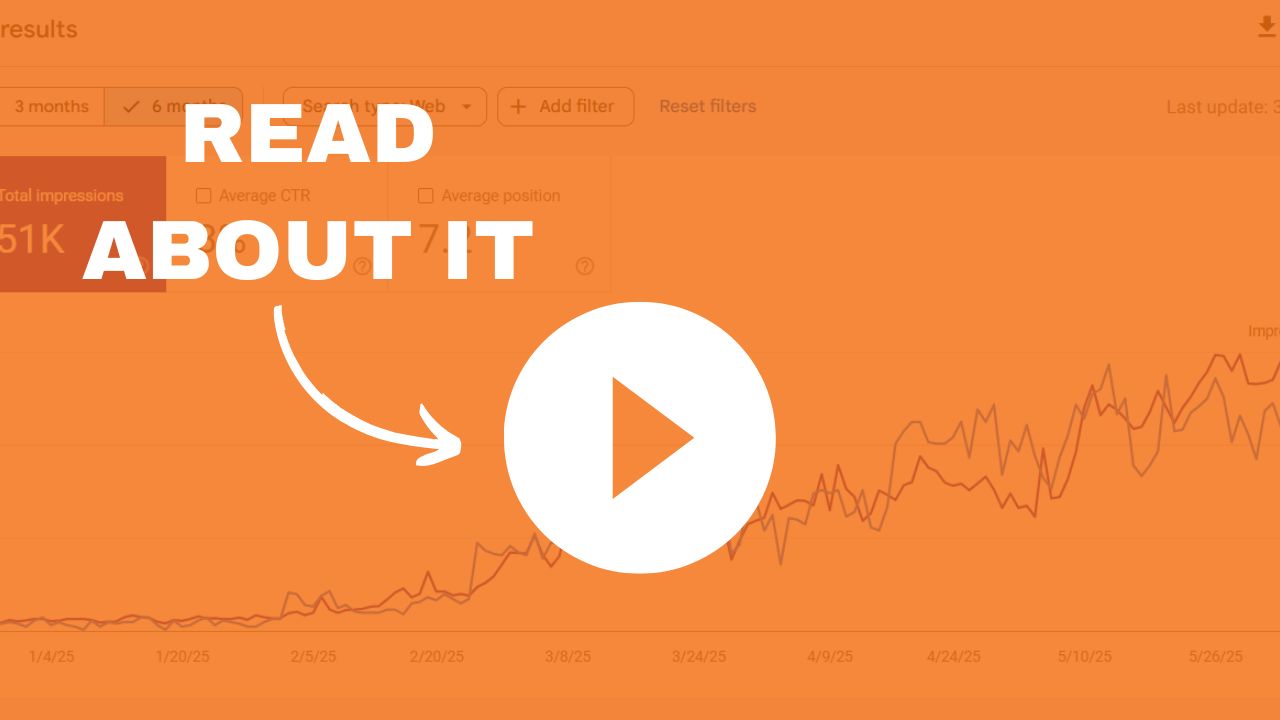How To Use Google Disavow Tool [Case Study + Guide]

If you’ve been doing or learning SEO for a while, you must surely have come across the so-called magic tool called the Google Disavow Tool.
You have heard that it’s that tool which helps remove the negative effects of bad backlinks that could tank your site or get you in troubled (penalty)
But, does it really help? Have you ever found yourself seeing no results after filing the disavow file?
Well, in this article, I will guide you through everything you need to know on how to use this tool effectively and when to use it, using my very own recent case study.
So without further ado, let’s dive right in
What Really Is The Disavow Tool?
Ok, let’s start from the basics. The chances are, you might not even know what the tool really is. So let me explain in simple language.
Google Disavow Tool is a tool launched by Google back in 2012, after being requested by the SEO community to come up with something that tells Google explicitly to ignore certain backlinks that could cause a negative effect on your site.
The tool became a big hit back then when Google released the algorithm called “Penguin”, which aims at punishing sites that participate in shady link-building schemes, or against the Google Webmaster Guidelines.
The tool was extensively used to help recover various sites from a manual penalty, and since then, it has become widely popular.
So now you know its history, let’s look at how the tool works.
How Does The Disavow Tool Work?
No one truly knows how the disavow tool really works in the background. But what many SEOs have speculated is that the tool works simply by rendering all the do-follow links that may be harmful, to nofollow.
That’s why Google themselves have advised time and again that it’s not necessary to disavow nofollow links since they don’t pass any page rank or link juice…But is that always the case?
There have been some case studies in the past that suggested that nofollow links can indeed cause certain negative effects to a site if there is a significant amount of them in the overall site’s backlink profile.
But don’t worry, I’ll get to this point later on when and how to use it. Just keep on reading 🙂
Google’s Warning
According to Google, using this tool in a wrong way can actually have a negative effect on your site’s rankings.
Here’s the official statement:
This is an advanced feature and should only be used with caution. If used incorrectly, this feature can potentially harm your site’s performance in Google’s search results.
They further stated that this tool should ONLY be used if you have a manual action against your site for unnatural links or if you think you’re about to get such a manual action (because of paid links or other link schemes that violate their guidelines.)
So in a nutshell, according to Google, the disavow tool should only be used when:
- You get a manual action for unnatural links, and you can’t contact the webmasters to remove the links pointing to your site
- You think you have enough number of low-quality links that could get you in trouble.
However, from the case study which I’m about to show you, plus some test that was done by various SEO experts, this tool can actually help improve your rankings, if used correctly.
So let’s see how to properly use it, using my own recent case study.
How To Correctly Use The Disavow File To Improve Rankings
Disclaimer: This is the result based on my very own case study and observation. This doesn’t guarantee that you will get the same or similar results. However, this will help you understand when and how to effectively utilize the tool.
Just a bit of background. So a guy approached me back in March 2020, asking me to look into his site as of why he was losing impressions rapidly for his keywords
(Impression is the number of times a keyword of your site shows up in the Google search result. In Google Search Console, you will be able to see the position of your keyword up to 300th position.)
For his site’s situation, many of his keywords had started disappearing from Google rapidly. You can see the decline here:
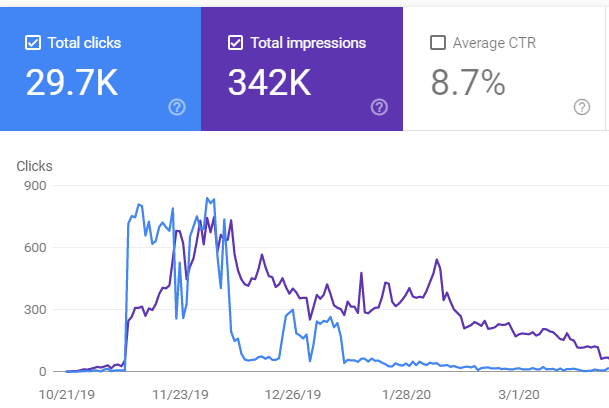
After looking at this graph, I knew exactly he was facing a severe algorithmic penalty. The algorithmic penalty is different from the manual penalty. With the algorithmic penalty, you’re essentially facing a slow decline in your site’s traffic, keywords impressions, and keyword positions in general.
Whereas in a manual penalty, you face an almost instant disappearance of your site from Google search, or in another word, almost every page on your site is de-indexed, plus you will also get a message in Google Search Console that you’re having one.
My Process Of Debugging The Cause
Since there’s never one reason why a site would face an algorithmic penalty, therefore I had to investigate the on-page, technical, and off-page of this site.
Just to cut this short (not to bore you), the site looked completely fine to me, from both the on-page and technical perspective. This site is actually an eCommerce site, with good keyword targeting and site structure. Nothing really to be worried about, at least not something that could cause this much of a disaster.
What I did next was I fired up Ahrefs and had a peep into the backlink profile of this site. As I expected, the site had over 800+ spammy referring domains pointing to it, most of which were very obvious spammy and manipulative (explain this a bit later)
So what I did? Just simply let him know that he needed to disavow those links, and nothing else.
Here’s the proof:
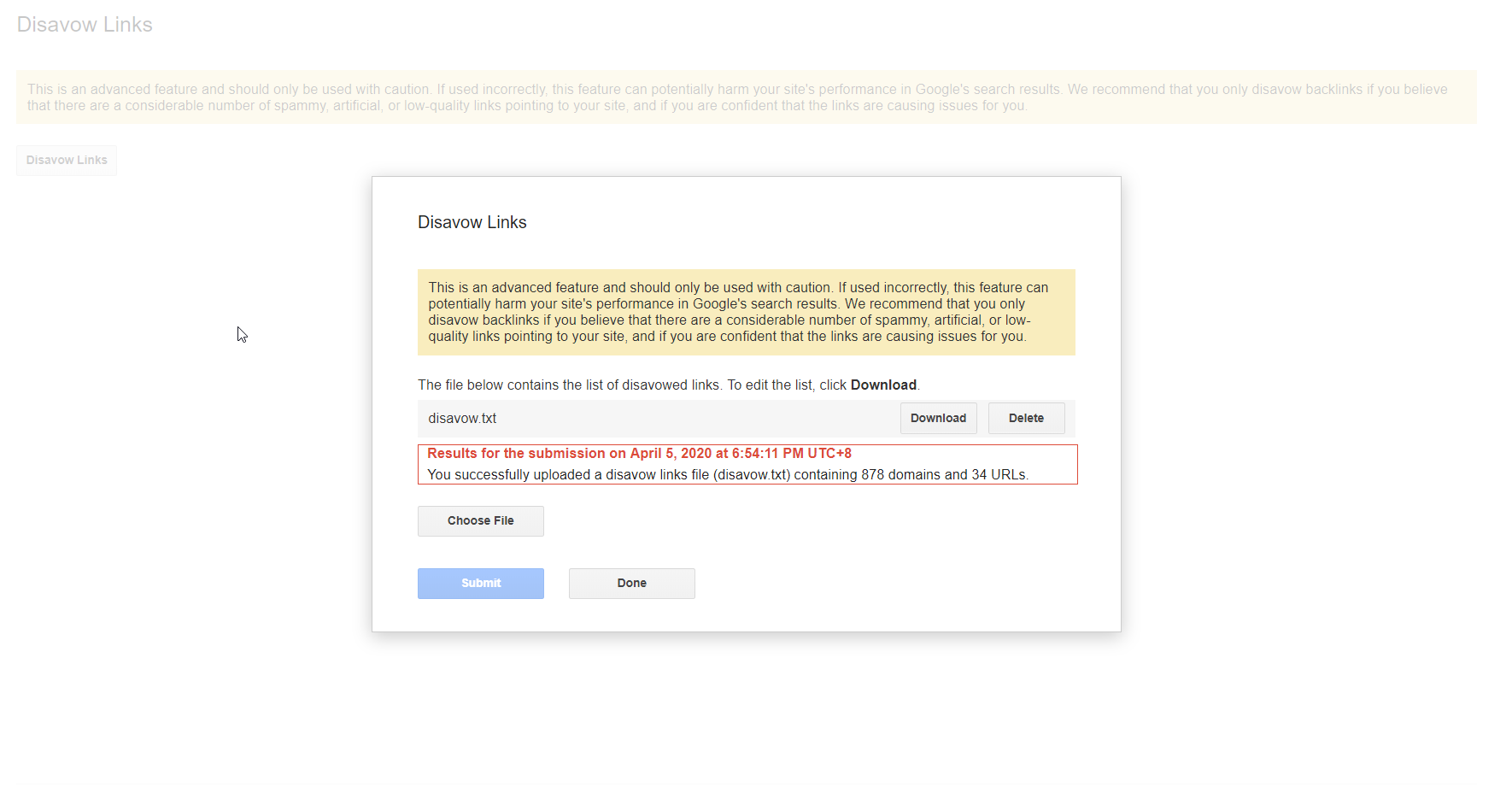
The disavow was filed on April 6, 2020, and the site started improving in about 2 weeks later (around April 20, 2020).
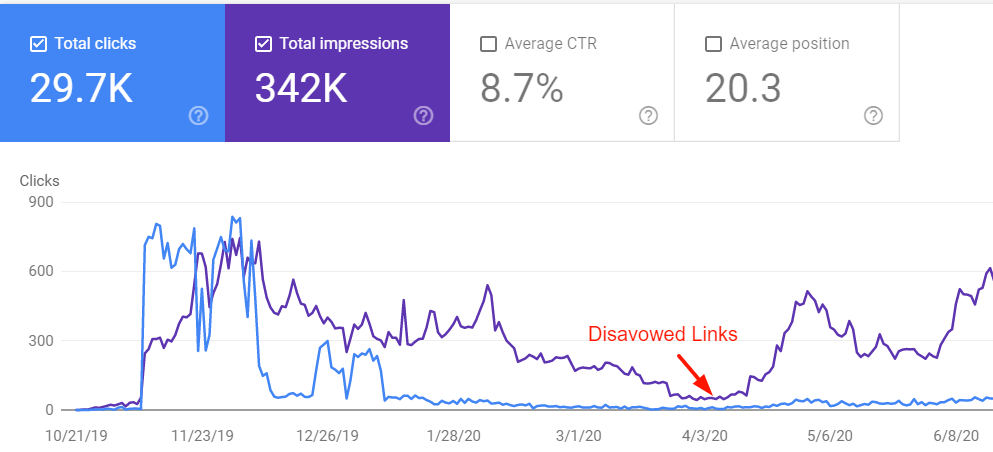
Please be noted the site had another 2 weeks to see the improvement before the May core update was released on May 4, 2020, Therefore, I’m certain that this improvement wasn’t the result of any Google update.
And yes, the temporary dip in the impression line (purple color) around May was the actual result of the May core update on the site. But then, it bounced back.
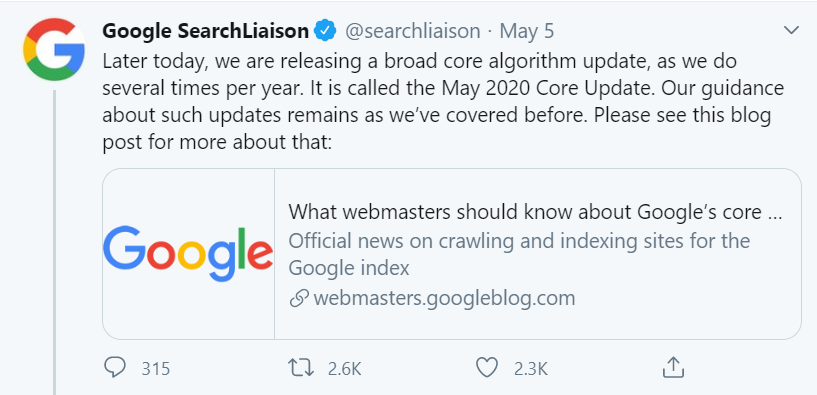
What Kind Of lInks That I Disavowed?
Ok, let’s backtrack a bit. So now you see that disavowing links actually worked in my case. But what kind of links that I really asked him to disavow?
Let me break it down for you to be super clear on this. Here are the 3 types of link that I only disavow (and you should really focus on)
- Very low-quality links (links that are coming from spammy sites and low value)
- Very manipulative links (links that are very obvious that they are built for SEO purposes such as articles that explicitly mentioned that they are guest post or the use of manipulative anchor text such as exact match anchors)
- Completely Irrelevant random links that have nothing to do with your site’s or page’s content
In this site’s case that I have taken as a case study, he had built so many links that were completely irrelevant to his site. Most of them were 301 redirected domains.
But, that’s not all. Besides looking at what kind of links that I should be disavowing, I also look at when to really do it, and that’s more important.
When To Really Disavow Links?
Time and again, Google has stated that their algorithm can ignore pretty much all the bad backlinks pointing to your site, and therefore, you don’t really need to disavow them.
And yes, I completely agree with this. Otherwise, most of the sites on the internet would already be suffering by now, due to these bad links.
Therefore, you should only disavow when you really face an obvious algorithmic or manual penalty.
Why Does The Disavow Tool Work?
Disclaimer: The point stated below is purely based on my theory, practical logical reasons, and the thoughts of various SEO experts industry. It’s not something that Google has openly disclosed about it.
As you probably know, the 3 main pillars of SEO are Authority, Relevancy, and Trust.
Authority is defined by how authoritative your site or how powerful it is. This mainly depends on the power of backlinks. Then comes relevancy or how relevant your content is to the queries. This depends on your content itself and the links pointing to your site. Then comes trust, which again depends on the content and links.
From the above 3 pillars, you can see that links can be used to give power to the site, relevancy, and trust. Now, what happens when you have too many low quality or irrelevant links pointing to your site?
Yes, that’s correct. Your site will lose relevancy (due to irrelevant links) and trust (due to low-quality links), and that’s when the disavow tool comes to the rescue.
Well, this brings us to the next important question
Why Disavowing Doesn’t Work For You?
I’m sure you must be asking this question right now, as to why after filing the disavow, you still don’t see any improvement yet.
From the above information, you now know that Google can ignore most of the links pointing to your site and bad backlinks can have a negative impact on your relevancy and trust factor.
Therefore, it would normally require a large number of bad links to really start showing a negative effect on your ranking. Something like let’s say if your overall backlink profile has 70%-80% of bad links.
However, one thing to keep in mind is that whatever problem you’re facing right now regarding the ranking, in most cases, it usually comes from bad on-page or technical SEO. So make sure you focus on those aspects first.
How To File A Disavow?
Ok, so now you’ve understood everything. Next let’s learn how to disavow backlinks, in case you haven’t used the tool before.
The steps are pretty easy and straightforward.
Before using the tool, first, you need to make sure you have a list of links you’d like to disavow. You can pull the data using link analysis tools such as Ahrefs or SEMRush.
Once you have the list, next up is to head over to
https://www.google.com/webmasters/tools/disavow-links-main.
Select the site you want to use and click “Disavow Links.”
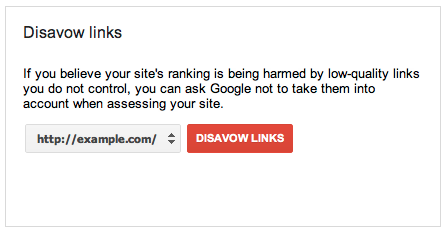
Next, you will see the warning like this:

It’s actually the same warning in Google’s official statement about disavowing backlinks. You can then go ahead and click the “Disavow Links” button.
Then you will be prompted to upload a text file containing the links.
Click “Choose File” and select the correct .txt file that has all of the bad backlinks.
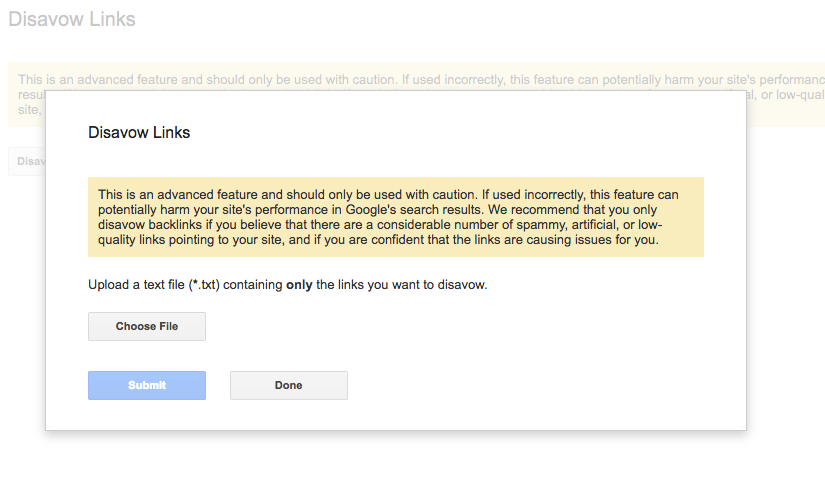
Regarding the format of links to put in the text file, you can follow simple instructions here. You can choose to disavow links at the domain level or at the URL level. If you have multiple links coming from the same domain, you can choose to disavow at the domain level.
Once you’ve uploaded the file, just click “Submit” and then “Done”, That’s all. Now, just wait for Google to start processing these links.

![[Case Study] How I Rank A Local Dental Clinic #1 On Google](https://techjackie.com/wp-content/uploads/2023/06/local-dental-clinic-SEO-case-study-768x576.jpg)
![Top 15 SEO Trends For 2020 & Beyond [Don’t Miss This]](https://techjackie.com/wp-content/uploads/2019/12/seo-trends-2020.jpg)

![[Case Study] How I Helped This National Music Lessons Client Double His Traffic & Rankings](https://techjackie.com/wp-content/uploads/2022/03/Music-Lessons-Client-SEO-Coaching-Case-Study.jpg)

![[Case Study] Recovering Hacked Health Website From SEO Algo Penalty](https://techjackie.com/wp-content/uploads/2023/09/Recovering-Hacked-Website-From-Algorithmic-Penalty-768x576.jpg)
